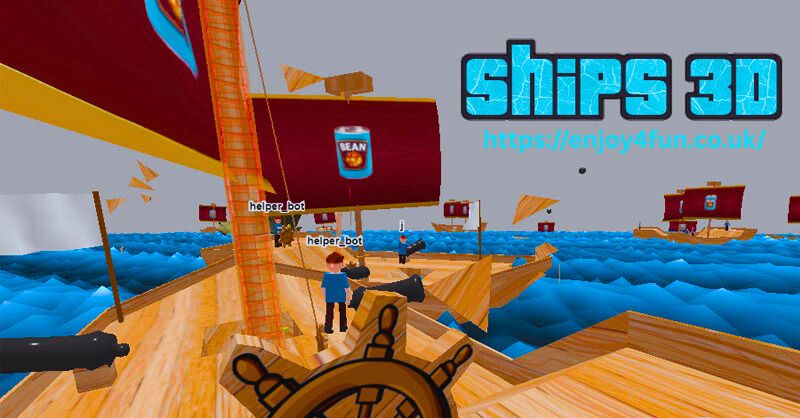In the digital age, the use of Ships 3D modeling has expanded far beyond its origins in architecture and industrial design. One of the most fascinating applications of this technology is in the realm of 3D ship models, commonly referred to as “Ships 3D”. From detailed recreations of historical vessels to futuristic sci-fi warships, 3D ship models have become essential assets across multiple industries—especially in gaming, virtual reality (VR), movies, education, and engineering.
In this comprehensive guide, we’ll explore the significance of ships in 3D, how they are created, their applications, and where to find or create high-quality ship models for your project.
What Are 3D Ship Models?
3D ship models are digital representations of ships created using 3D modeling software. These models can represent anything from ancient sailing vessels and modern cargo ships to fantasy pirate ships or interstellar cruisers. The key advantage of 3D ship models is that they can be viewed, manipulated, and used interactively in digital environments.
These models often include:
- Hull and deck details
- Rigging and sails (for historical or sailing ships)
- Interiors such as cabins, cargo holds, or engine rooms
- Functional mechanical parts in engineering models
- Textures and materials for realism
Why Are 3D Ship Models Important?
3D ship models are essential for several industries, including:
- 1. Gaming and Virtual Reality
Game developers use ships in 3D for realistic sea battle scenes, open-world exploration, and naval simulation games. From historical combat in games like Assassin’s Creed IV: Black Flag to futuristic fleets in Star Citizen, ship models bring immersive experiences to life.
- 2. Film and Animation
Movies and animations benefit from high-detail ship models to create epic scenes without the need for actual ships. Films like Pirates of the Caribbean heavily relied on CGI ships crafted in 3D.
- 3. Engineering and Naval Architecture
3D ship models help engineers and naval architects simulate real-world conditions, test design integrity, and perform virtual walkthroughs during development. Simulation of hydrodynamic flow and stress points is also possible.
- 4. Education and Training
Virtual ship models are used for maritime training simulators, helping cadets learn navigation, maintenance, and emergency procedures.
- 5. 3D Printing and DIY Projects
Hobbyists and scale modelers use downloadable 3D ship files for 3D printing. This has become particularly popular for creating museum-quality replicas or tabletop gaming miniatures.
How Are 3D Ship Models Made?
Creating a 3D ship model involves several stages, including:
- 1. Concept and Blueprinting
Designers start with concept sketches or blueprints of the ship. For historical accuracy, real ship plans or photographs may be used.
- 2. Modeling
Using software like Blender, Autodesk Maya, 3ds Max, or Rhino, the designer builds the ship using polygonal or NURBS modeling techniques. Hull shaping, deck detailing, and rigging are meticulously crafted.
- 3. Texturing and UV Mapping
Textures add realism to the ship model—wood grain, metal, rust, paintwork, etc. Artists use UV mapping to correctly place textures over the 3D geometry.
- 4. Rigging and Animation (Optional)
For ships that need movement (e.g., sailing animations or game mechanics), rigging is applied. This includes moving sails, rudders, and even firing cannons in some cases.
- 5. Rendering or Exporting
Finished models are rendered for previews or exported into game engines (like Unity or Unreal Engine) or file formats like OBJ, FBX, or STL for 3D printing.
Popular Types of 3D Ship Models
Different types of ships are popular in 3D modeling communities. Here are some common categories:
- Historical Ships: Galleons, Viking longships, Roman triremes, and WWII battleships.
- Modern Vessels: Container ships, luxury yachts, cruise liners, oil tankers.
- Fantasy & Sci-fi Ships: Pirate ships, steampunk airships, space frigates.
- Military Ships: Aircraft carriers, destroyers, submarines, gunboats.
Each type serves different functional and aesthetic purposes in projects.
Where to Find 3D Ship Models
You can find 3D ship models both free and paid on a variety of platforms:
Free Resources
- Sketchfab
- Thingiverse
- Clara.io
- TurboSquid (free section)
- CGTrader (free models)
Premium Resources
- TurboSquid
- CGTrader
- ArtStation Marketplace
- 3DExport
- Blender Market
When purchasing or downloading models, ensure the license matches your intended use—commercial, personal, or educational.
Benefits for Websites Selling 3D Ships
If you’re a digital artist, model creator, or a 3D asset platform, targeting keywords like “Ships 3D models,” “3D ship for game,” “3D printable ship,” or “3D pirate ship STL” can drive niche traffic to your site. Here are a few SEO tips:
- Optimize product pages with detailed descriptions and tags (e.g., “low-poly cargo ship FBX,” “PBR textured galleon for Unreal”).
- Use structured data to highlight downloadable content.
- Include high-resolution previews or 360-degree viewers to reduce bounce rate.
- Create blog content comparing ship model types or tutorials on using them.
Tips for Creating SEO-Friendly Content for “Ships 3D”
When publishing content around this keyword, keep these SEO practices in mind:
- Keyword Optimization: Use long-tail variations like “3D ship model for Blender,” “printable naval ship STL,” and “VR-ready ship model.”
- High-Quality Images: Include screenshots or renders of the ship models in action.
- Internal Linking: Link to related pages, such as modeling tutorials, download portals, or software comparisons.
- Content Depth: Add user guides, how-tos, or historical background to enhance relevance.
- Fast Loading & Mobile Optimization: Especially important for image-heavy pages.
Future of Ships in 3D
The future of 3D ships is being shaped by AI, procedural generation, and real-time rendering. With tools like NVIDIA Omniverse, designers can collaborate in real-time to build hyper-realistic, interactive ships. Moreover, with the rise of the metaverse, we may soon see ships navigating virtual oceans in persistent worlds.
Additionally, AR (Augmented Reality) applications are allowing users to project 3D ships into real-world environments for education, training, and entertainment.
Conclusion
Ships 3D is a growing niche in digital design that bridges historical accuracy, artistic creativity, and practical simulation. Whether you are a game developer, maritime enthusiast, engineer, or hobbyist, 3D ship models offer versatile use cases that are both functional and inspiring. From ancient sailing vessels to futuristic battleships, the seas—virtual or otherwise—are yours to explore. With thousands of models available online and tools more accessible than ever, now is the perfect time to set sail in the 3D world.






